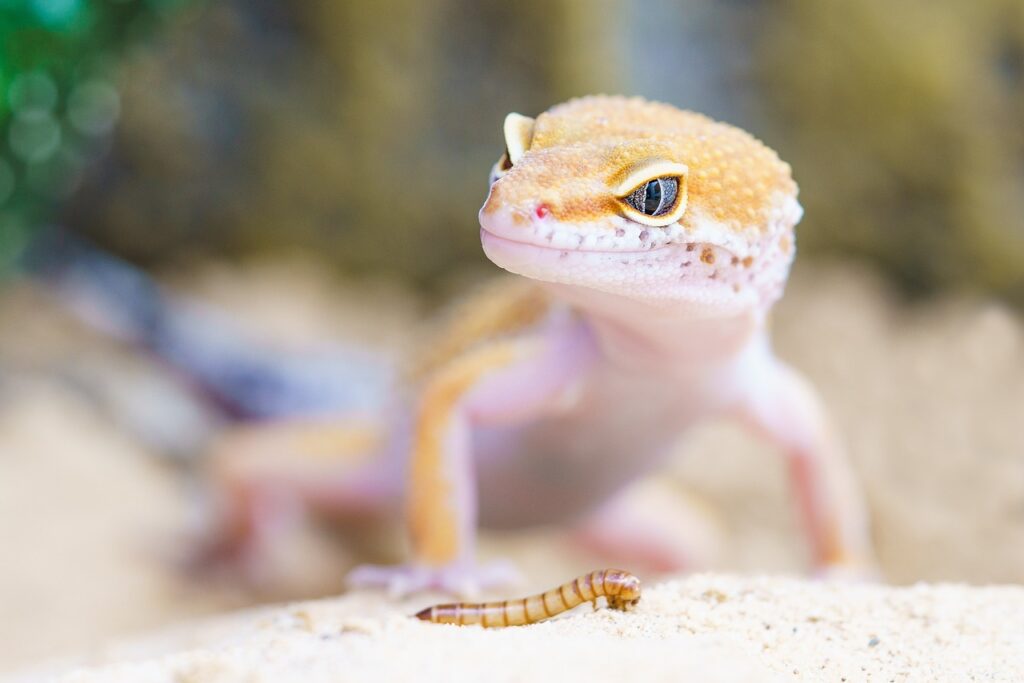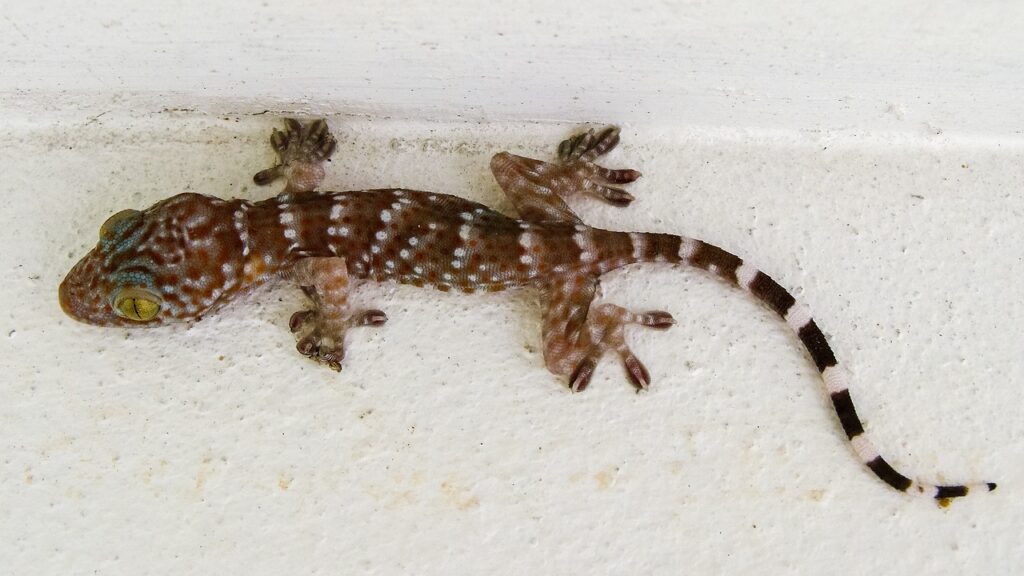
The World of Geckos: A Statistical Overview unravels the compelling and diverse universe of geckos, a species with over a thousand variants scattered across the globe. This insightful piece presents a comprehensive and detailed statistical exploration of their habitat, genetic diversity, population dynamics, and survival strategies. You will uncover an elaborate analysis and understanding of how these adaptable creatures play a significant role in our complex ecosystem. Don’t miss this riveting exploration into the world of geckos, providing an intriguing perspective that blends science with fascination.

Gecko Species Diversity
Geckos constitute a large group of reptiles, classified under the family Gekkonidae. These creatures are known for their exceptional diversity with over 2,000 recognized species worldwide, featuring an array of unique traits and behaviors.
Common Gecko Species
Familiar within the vast diversity of geckos are the Leopard Geckos and Crested Geckos. The Leopard Gecko, native to the Middle East, is infamous for its distinct spots and its friendly nature makes it a preferred choice as a pet. The Crested Gecko, found in New Caledonia, is recognized by its crest that extends from its eyes to its tail, and its ability to change color.
Lesser Known Gecko Species
Among lesser-known species, there is the Satanic Leaf-Tail Gecko from Madagascar, which is known for its fantastic camouflage skills, making it nearly indistinguishable from the dead leaf. Another is the Electric Blue Gecko, which gains attention for its vibrant blue color and rarity, found only in a small area of Tanzania.
Distribution & Habitats of Various Species
Geckos inhabit all corners of the globe, except for Antarctica. They are predominantly found in various tropical and subtropical regions, from dense rainforests and deserts to mountainous areas and even human settlements. Moreover, geckos have a remarkable ability to adapt to diverse environmental conditions, which contributes to their widespread global presence.
Gecko Population Statistics
Globally Estimated Gecko Populations
Precise estimation of global gecko populations is challenging due to their vast species diversity and wide distribution. However, it’s projected that the gecko population numbers in the hundreds of millions.
Species-wise Population Breakdown
Species-wise population breakdown is a complex undertaking, yet it’s acknowledged that some species like the House Geckos are highly abundant, found in millions across their habitat ranges. In contrast, other species like the Electric Blue Geckos have restricted distribution and thus, limited population numbers.
Endangered & At-risk Species
Although geckos generally have good survival instincts, some species are classified as endangered or at risk. Deforestation, habitat loss, and illegal pet trade have drastically impacted species such as the Gargoyle Gecko and Golden Gecko.
Gecko Anatomy and Physiology
Basic Anatomy of Geckos
Geckos possess a typical reptilian body structure with certain unique features. They are small to medium-sized, have well-developed limbs, large eyes with vertical pupils, and a tail that they can shed as a defense tactic.
Unique Physiological Attributes
Among their unique traits, geckos are known for their specialized toe pads that enable them to effortlessly scale walls and even ceilings – a superpower attributed to millions of microscopic hairs on their feet. Some geckos, like the Day Geckos, are diurnal – active during the day, which sets them apart from the majority of gecko species that are nocturnal.
Variations Among Different Species
Diversity in gecko species manifests in the wide disparities in their size, color, behavior, and habitats. For instance, the smallest gecko species, the Jaragua Sphaero, measures just 16mm while the New Caledonian Giant Gecko can reach up to 400mm in length.
Gecko Behavior and Lifestyle
General Behavior Patterns
Geckos are recognized for their vocalizations, from chirps and clicks to barks and hisses, which they employ for communication and courtship. Most are nocturnal, active during the night, and prefer solitary lifestyles with minimal social interaction.
Species-Specific Behavior
Certain species exhibit unique behaviors. The Tokay Gecko, for example, is known for its defensive aggression, while the Leopard Gecko has the unique trait of wiggling its tail when hunting or during courtship.
Activity Cycles & Sleeping Patterns
As predominantly nocturnal animals, geckos usually spend their days hidden under rocks, leaves or in tree crevasses, sleeping to conserve their energy for nighttime activity. Different gecko species possess different activity cycles. For instance, the Day Gecko, contrary to most gecko species, is diurnally active.

Gecko Reproduction Statistics
General Reproduction Facts
Geckos have fascinating reproduction traits – some geckos breed multiple times a year, while others breed only once every two years. Females lay clutches of 1-2 eggs, which they carefully hide to protect them from predators.
Species-Specific Reproduction Details
Certain species exhibit remarkable reproductive tactics. For instance, the Mourning Gecko and Yellow-headed Gecko are parthenogenetic species – females can reproduce without male fertilization.
Population Impact of Reproduction Rates
Reproduction rates have significant implications for gecko populations. Higher reproduction rates can help species quickly recover from population declines, whereas lower rates may put rarer species at risk.
Gecko Diet and Feeding Habits
General Dietary Information
Geckos are typically carnivorous or insectivorous, feeding on a diet of insects, spiders, small mammals, and even other reptiles. However, some larger species also include various fruits and nectar in their diet.
Species-Specific Diet Details
While the diet for most geckos is fairly similar, some exceptions include the Day Geckos which consume more fruits and nectar, and the Leopard Gecko which is known to eat its own skin after shedding to prevent potential predators from finding its trail.
Impact of Diet on Gecko Populations
The diet and eating habits of geckos play a crucial role in their population. Dietary adaptability contributes to a species’ survival in diverse habitats while over-dependency on specific food sources can make some gecko populations vulnerable to changes in prey availability.

Life Expectancy and Survival Rates of Geckos
Average Lifespan of Geckos
While geckos’ lifespan can vary widely across species, the average life expectancy is between 5 and 10 years, with certain species capable of living up to 20 years under optimal conditions.
Factors Influencing Life Expectancy
Factors influencing life expectancy include species, diet, habitat conditions, and threats from predators or humans. Geckos in captivity often live longer due to controlled environments free from predators and ready food supply.
Survival Rates & Influencing Elements
Survival rates vary from species to species and are influenced by similar factors as life expectancy. Reproduction rates, disease resistance, and defense mechanisms also play crucial roles.
Gecko Defense Mechanisms
Common Defense Tactics
Common defenses include camouflage, tail autotomization (shedding tail to distract predators), biting, and secreting a foul-smelling material. Some geckos can also make threatening noises or puff themselves up to appear larger.
Species-Specific Defense Actions
Some species, like the Leaf-tailed Geckos from Madagascar, have evolved incredible camouflage techniques, making them nearly invisible in their natural habitats. The House Gecko will repeatedly detach its tail, a process known as serial autotomy, to escape predators.
Effectiveness & Survival Impact of Defense Mechanisms
The effectiveness of these defenses often factors into survival rates and resilience of gecko populations. For example, geckos capable of effective camouflage or serial autotomy have greater chances of escaping predators, thus promoting their species’ survival.
Geckos and Human Interaction
Human Influence on Gecko Populations
Human activities can both positively and negatively impact gecko populations. While habitat destruction and illegal pet trade pose significant threats, human structures provide new environments for certain adaptable gecko species.
Geckos in Pest Control
Geckos play a crucial role in controlling pest populations in human residences and agricultural fields due to their voracious appetite for insects, making them beneficial for humans.
Geckos as Pets
Geckos’ unique appearance, coupled with relatively easy care, make them popular pets. Leopard Geckos, in particular, are a favorite pet choice due to their docile nature and long lifespan.
Conservation Efforts for Geckos
Current Conservation Measures
Current conservation efforts include habitat protection, breeding programs in both zoos and protected reserves, and regulations on trade. Some countries have also implemented laws to protect all gecko species within their boundaries.
Required Conservation Steps
Continuous research to understand gecko species and their habitats, stricter regulation on pet trade, and public awareness campaigns are among the necessary conservation steps to protect endangered and at-risk gecko species.
Public & Private Stakeholders in Gecko Conservation
Both public and private stakeholders contribute to gecko conservation. Governments, non-profit organizations, zoos, research bodies, and even individuals through responsible pet ownership play a crucial role in ensuring these remarkable creatures continue to thrive.